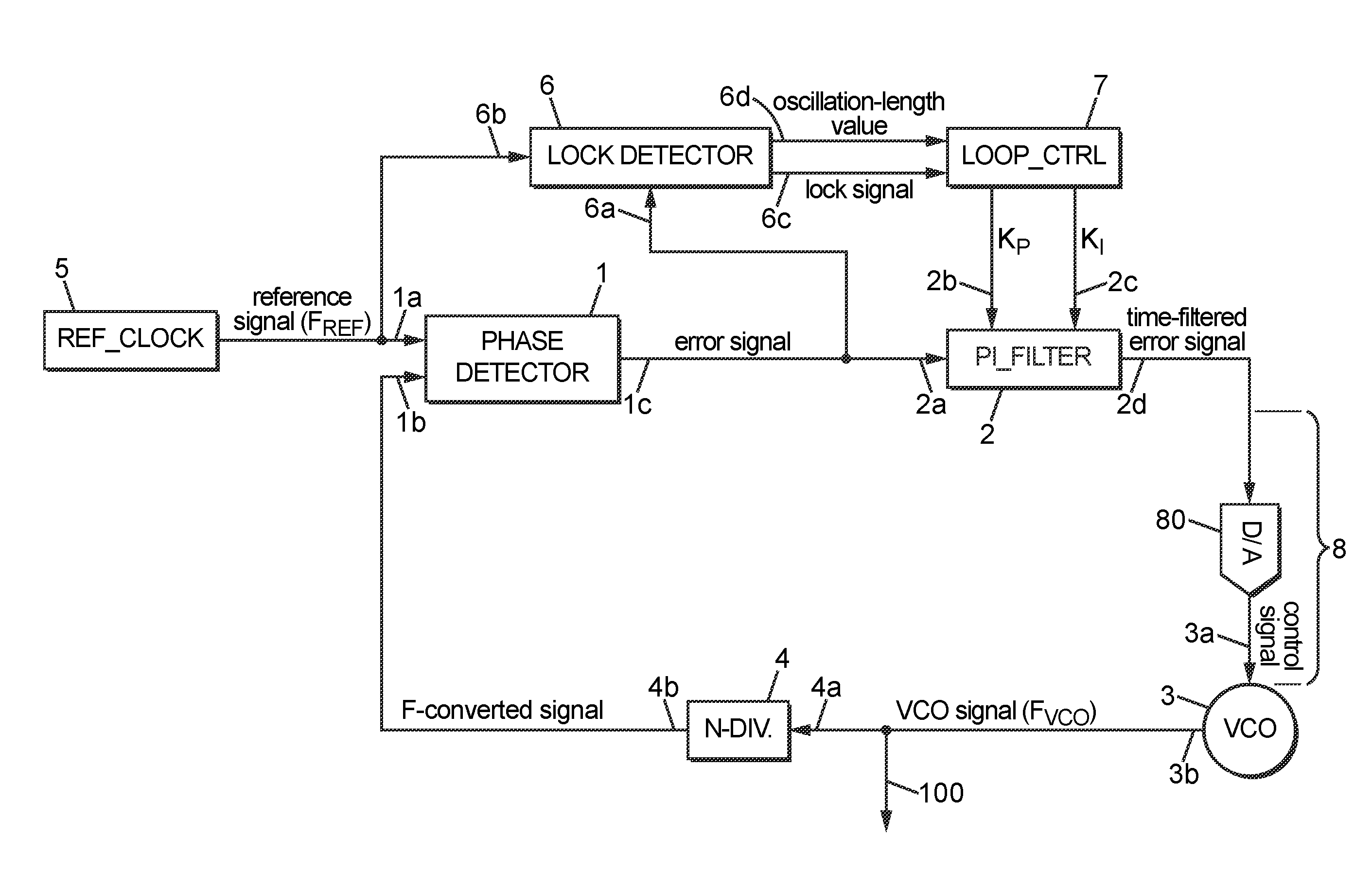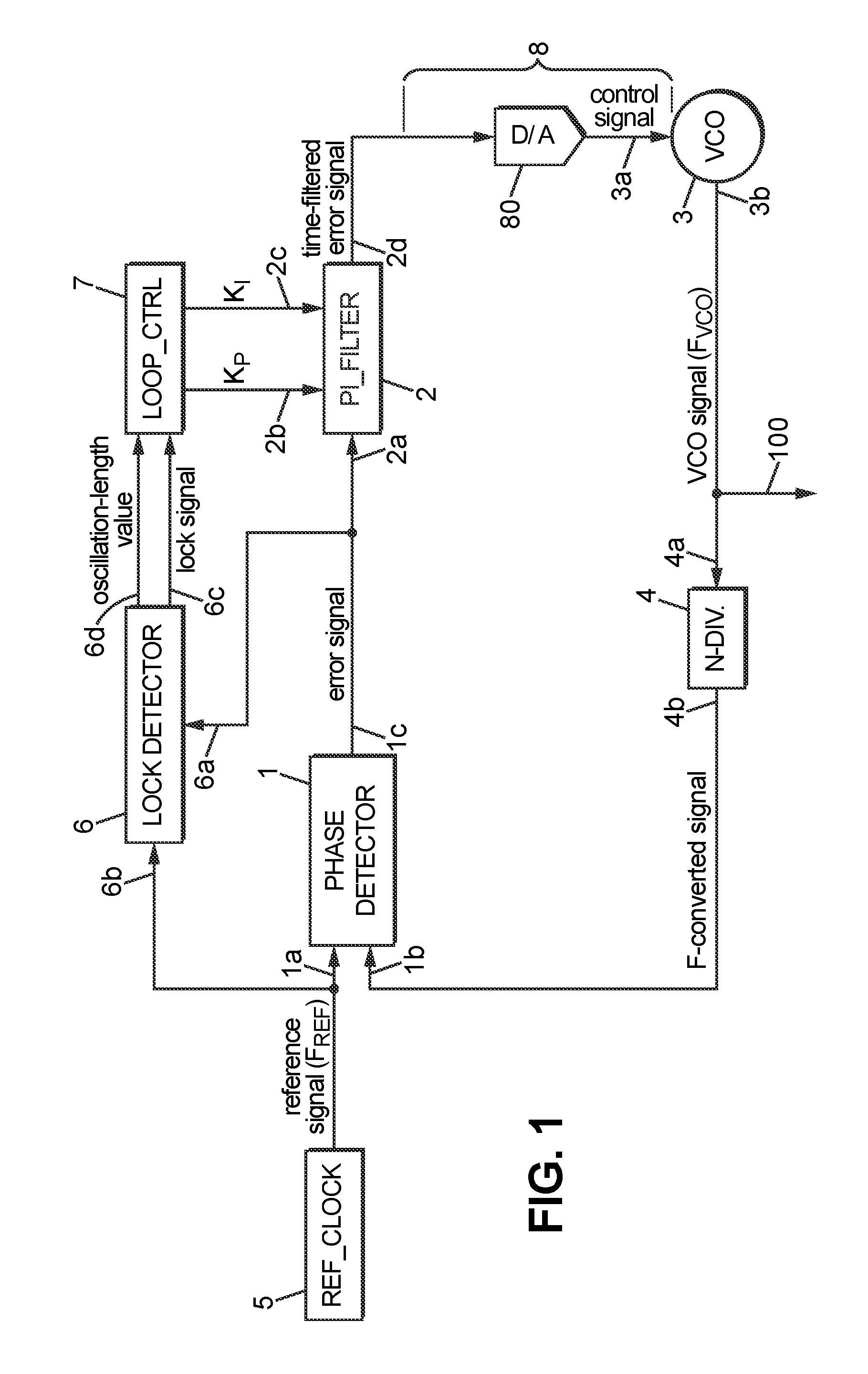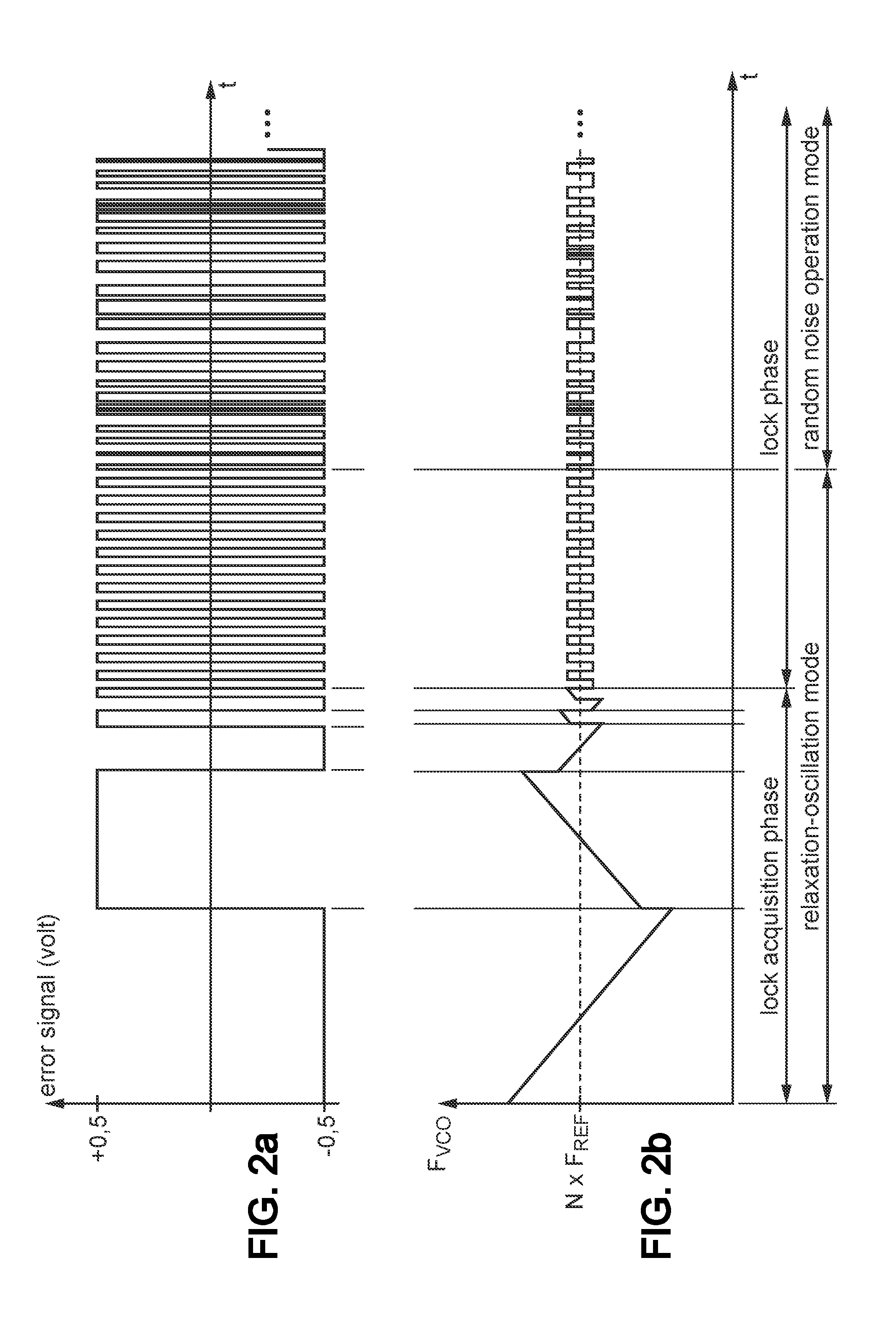Phase-locked loop device with managed transition to random noise operation mode
a phase-locked loop and operation mode technology, applied in the direction of electrical equipment, pulse automatic control, etc., can solve the problems of wasting time, capturing noise within the loop-control frequency, and starting the lock acquisition, so as to achieve rapid reaction to lock state loss, easy to produce, and easy to produce
- Summary
- Abstract
- Description
- Claims
- Application Information
AI Technical Summary
Benefits of technology
Problems solved by technology
Method used
Image
Examples
Embodiment Construction
[0036]With reference to FIG. 1, which is a block diagram of a PLL device according to some embodiments, the reference numbers indicated therein have the following meanings:[0037]1 a phase comparator, denoted PHASE DETECTOR, with inputs respectively labelled 1a and 1b, and output 1c [0038]2 a loop filter, denoted PI_FILTER, with signal input 2a, configuration inputs 2b and 2c, and signal output 2d [0039]3 a voltage-controlled oscillator (VCO) module, with control input 3a dedicated for entering a control signal, and output 3b for producing a VCO signal[0040]4 a frequency converter, denoted N-DIV., with input 4a and output 4b [0041]5 a reference clock, denoted REF_CLOCK, for supplying a reference signal which has a reference frequency FREF [0042]6 a lock detector, with detector inputs respectively labelled 6a and 6b, and outputs 6c and 6d [0043]7 a loop controller, denoted LOOP_CTRL[0044]8 a control connection, extending from the filter output 2d to the control input 3a of the VCO mod...
PUM
 Login to View More
Login to View More Abstract
Description
Claims
Application Information
 Login to View More
Login to View More - R&D
- Intellectual Property
- Life Sciences
- Materials
- Tech Scout
- Unparalleled Data Quality
- Higher Quality Content
- 60% Fewer Hallucinations
Browse by: Latest US Patents, China's latest patents, Technical Efficacy Thesaurus, Application Domain, Technology Topic, Popular Technical Reports.
© 2025 PatSnap. All rights reserved.Legal|Privacy policy|Modern Slavery Act Transparency Statement|Sitemap|About US| Contact US: help@patsnap.com



